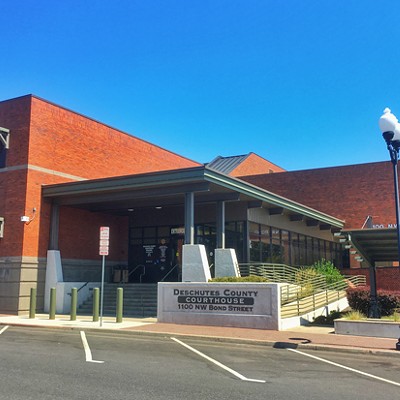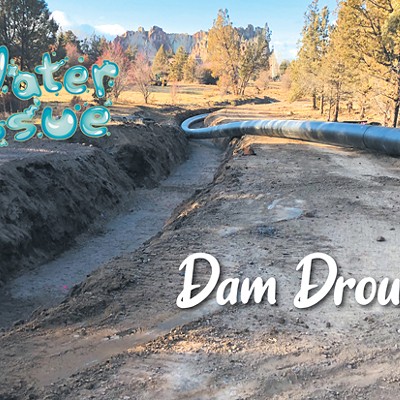A group that has worked to restore upper basin flows in the Deschutes River says short-term steps must be taken immediately to improve habitat for the endangered spotted frog. The Coalition for the Deschutes was formed in 1985 as a not-for-profit corporation to protect the economic, recreational and environmental future of the Deschutes River basin. It says that regulating water release volumes from Wickiup dam to avoid extreme high and low flows associated with irrigation needs in the spring and summer will help restore critical habitat for the frog.
On an exclusive viewing tour on a slough on the upper river near LaPine State Park, scientists pointed out spotted frog egg masses laid during recent warm weather in early April.
Dr. Jerry Freilich, a retired aquatics ecologist, is part of the group. Freilich spent 13 years as chief of research for the Olympic National Park in Washington and is considered a river flow regime expert. Much of his research centered on the Elwha River where a $325 million dam removal and restoration project, the nation's largest thus far, has led to returning runs of salmon and steelhead.
"This slough is an unusual place because it's a spot where slow water, or no flow at all, is what is needed so the babies can hatch in a safe environment," says Freilich. However, the slough is not perfect because of erratic water flows that fluctuate from reservoirs to farms with seasonal irrigation needs. "This is a population that has managed to hold on, but because these frogs are in such dire straits we really need to protect every one of these populations right now, and this is one that needs protection," he says.
Gail Snyder is board president of the Coalition for the Deschutes. She talks about short and long-term solutions to problems in the upper Deschutes River. Short term, she says, year-round flows of 300 cubic feet per second can be established to moderate run off and allow the river ecology to begin improving. She says that flow level would provide adequate water for users, including farms. The suggested flow is contained in a 1996 Wild and Scenic Management Plan for the upper Deschutes. Longer term solutions include irrigation district upgrades to reduce waste and evaporation as water is transported for irrigation.
Shon Rae, communications manager for the Central Oregon Irrigation District, is cautious about the short-term solutions offered by the coalition. "With regard to whether 300 cfs of year-round flow is what is needed to protect the frog, the whole issue of winter flows is very much the subject of ongoing consideration by the experts." She continued, "You can't look at winter flows in a vacuum – as providing more flow during certain times of the year will affect what happens in the river at other times of the year."
Rae says irrigation districts will continue work on developing conservation measures that will be included in the Habitat Conservation Plan. "The [irrigation] districts fully anticipate that the final HCP measures will meet the requirements of the Endangered Species Act while enabling the districts to continue to fulfill legal obligations to deliver water to their patrons," she explained. Short-term solutions not supported with good science could end up being detrimental for the frogs, she argues.
Freilich argues that most people simply don't understand the fragile nature of rivers. "The river banks have vegetation that is tremendously important to the animals and plants that live here." He explains that the bottom of a river is the most important part of the waterway, providing food for aquatic life. "The stone flies, mayflies, caddis flies, and small midge larvae live in the bottom. The rocks, gravel, and riffles are all vitally important. All of that is affected by flow regime." Referring to water released at Wickiup, Freilich says, "You can't just turn it on like a hose and turn it off like a hose and expect nature to go on its merry way."
COID's Rae stated that whatever changes might be appropriate in the short term, the long-term approach is still the same. "We need to modernize our existing delivery system. Such modernization includes conservation efforts like piping and lining canals, which requires significant funding."
Last week, Sen. Jeff Merkley included language in a Senate Energy and Water Appropriations bill that urges the Bureau of Reclamation to provide additional funding for projects that will help irrigation districts comply with the Endangered Species Act.
"The collaborative process that is unfolding in Central Oregon to address the loss of habitat for the spotted frog is remarkable," Merkley said.
COID's Shon Rae adds, "If enacted into law, the Water Appropriations bill will be a boost to continuing our collaborative approach to water needs in our basin."

























